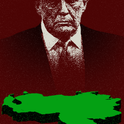Two months on from the start of the war, Russia seems no closer to achieving its original aims. Even if taken at face value, the recent announcement that the goal is now the capture of Donbas and southern Ukrainian territory, creating a land bridge from Crimea, is a dramatic climbdown from the original goals of conquering the whole country, effecting regime change, and forcing Nato to retreat to the force posture of the mid-1990s.
Revising goals downward so early in a war of choice is, of course, a sign that the Kremlin thinks things are going badly. And there is every reason to think that things are going to get significantly worse for Putin.
From the start of the war, western analysis has highlighted the Russian army’s apparent problems with logistics, communication, equipment, training and morale. All of these are issues that could in theory be fixed, greatly improving Russia’s capacity to fight the war. But there are two immediate problems with this. The first is the impact of sanctions, which will continue to put pressure on Russian finances, ultimately limiting the Kremlin’s capacity to spend its way out of the difficulty. Sanctions also pose a challenge to attempts to resupply and repair—let alone upgrade—equipment, because they cover military and technology sales.
The second problem is time. Russian personnel and equipment losses have been enormous. Repairing and building new vehicles, planes and helicopters is a slow process, and it takes many years to replace lost warships. It also takes time to adequately train soldiers to replace the many thousands killed and wounded. Russia appears to be losing men and weapons more quickly than it can replace them; unless this changes, it spells defeat.
But even if the Kremlin were able to overcome these problems, there are two further, fundamental challenges concerning the conduct of the war and its aims that are entirely outside its control. These mean Russia’s war against Ukraine will continue to fail.
The first is that the west seems committed to supplying Ukraine with military assistance for the foreseeable future. The scale of this aid is staggering. The United States alone has provided or pledged $3.4bn in military assistance since the start of the war, including $1.6bn in the last two weeks alone; the top ten countries providing military aid have collectively pledged nearly $6bn. It is impossible for Russia to compete with this.
Beyond the headline figures, the specifics of western aid should also be deeply worrying for the Kremlin. The most obvious problem for Putin is that aid is seemingly being tailored to address the changing character of the war. The UK government, for example, has announced that it will “backfill” Polish tank capacity, supplying Poland with tanks that will enable the country to supply its own tanks to Ukraine. Like the recent announcement that the US will provide armoured personnel carriers and howitzers, this seems designed to help Ukraine in the fight for its eastern territory.
Early in the war, concerns about the risk of escalation appeared to be limiting the types of western aid provided to Ukraine. The Kremlin attempted to increase this anxiety, and so choke off the aid supply, by announcing that western supply convoys would be regarded as legitimate targets and by making ominous, if vague, noises about nuclear weapons. The latest round of pledges from western donors suggests that these threats may be causing less concern than previously, or that that they carry less weight because the will to support Ukraine has strengthened. Either is very bad news for Putin, since this was almost the only lever that he could pull to try to slow or stop aid to Ukraine.
The public acknowledgement by western leaders that the war could last for years is an important signal that they are not shaping policy in expectation of a quick resolution; they are preparing their populations for a long-term commitment to Ukraine. Any hopes that Putin may have pinned on nervousness about this would seem to be misplaced.
This means that Russia, with its capacity to wage war significantly degraded by the first two months of fighting and with limited (and declining) scope to reverse its losses, will have to deal with an opponent benefitting from a seemingly open-ended supply of billions of dollars’ worth of weapons. That is not sustainable.
There is a second fundamental issue that Putin is unable to control. In aiming to weaken the west and turn the European strategic clock back, he has triggered the opposite outcome. Although differences inevitably remain, western states look much more united than they have at any point this century, and much more focused on strengthening military capacity in the face of Russian threats. It now looks possible that despite their long histories of neutrality, Finland and Sweden will join Nato. This would be a strategic disaster and a profound humiliation for Russia. Threats intended to prevent their accession seem to be having the reverse effect. Whatever short-term gains the Russian army may make by reducing cities like Mariupol to ruins, the medium- and long-term prospects look disastrous for Putin, and he appears powerless to do anything about it.












